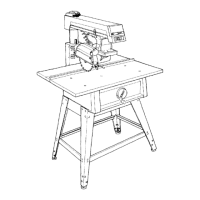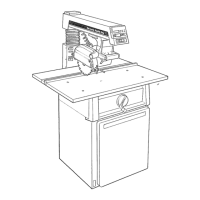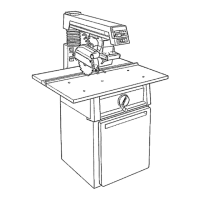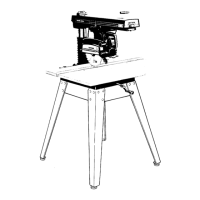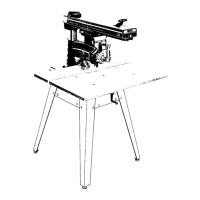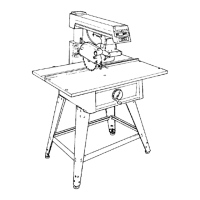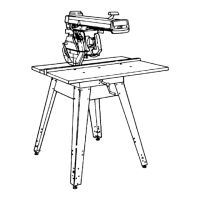MOTOR TROUBLE-SHOOTING CHART
NOTE: Motors used on wood-working tools are
particularly susceptible to the accumulation of
sawdust and wood chips and should be blown out or
"vacuumed" frequently to prevent interference with
normal motor ventilation.
TROUBLE PROBABLE CAUSE SUGGESTED REMEDY
otor will not run. 1. Low voltage. 1. Check power line for proper voltage.
otor will not run and
ses "BLOW".
otor fails to develop
II power. (Power
ltput of motor
;creases rapidly with
_crease in voltage at
otor terminals, For
:ample: a reduction of
1 I% in voltage causes a
duction of 19% in
aximum power output
of which the motor is
capable.
otor overheats.
otor starts slowly or
ils to come up to full
s!teed.
otor stalls (resulting in
own fuses or tripped
rcuit breakers).
Frequent opening of
fuses or circuit
breakers.
1. Short circuit in line,
cord or plug.
2. Short circuit in motor or
loose connections.
3. Incorrect fuses in power
line.
1,
2.
3.
Power line overloaded
with lights, appliances
and other motors.
Undersize wires or circuit
too long.
General overloading of
power company's facilities
(in many sections of the
country, demand for
electrical power exceeds
the capacity of existing
generating and distribution
systems.)
1. Excessive feed rate when
crosscutting or ripping.
2. Improper cooling. (Air
circulation restricted
through motor due to
sawdust, etc.)
3. Saw blade has "heel".
1. Low Voltage - will not trip
starting switch.
1. Voltage too low to permit
motor to reach operating
speed.
2. Fuses or circuit breakers
do not have sufficient
capacity.
1. Motor overloaded.
2. Fuses or circuit breakers
do not have sufficient
capacity.
1. Inspect line, cord and plug for damaged
insulation and shorted wires.
2. Inspect all terminals in motor for loose or
shorted terminals or worn insulation on wires.
3. Install correct fuses.
1. Reduce the line load.
2. Increase wire sizes, or reduce length of wiring.
3. Request a voltage check from power company.
1. Slow down rate of feed.
2. Clean out sawdust to provide normal air
circulation through motor.
3. Refer to Alignment Procedure Section of
manual Step Five.
1. Correct low voltage condition.
1. Correct the low line voltage condition.
2. Replace fuses or circuit breakers with proper
capacity units.
1. Reduce motor load.
2. Replace fuses or circuit breakers.
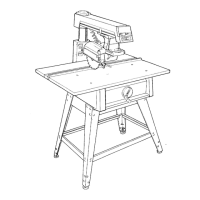
